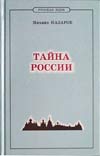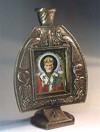Earn 4 bonus cash-back points for every $10 for order subtotal $5000.01 and up!
Earn 3 bonus cash-back points for every $10 for order subtotal $2000.01-$3000!
Earn 7 bonus cash-back points for every $20 for order subtotal $3000.01+!
Festal church bells (from 4 to 820 kg)
| Basket Blues | Тайна Россiи | Table candle-stands St. Nicholas panel |
|
US$296.04
|
US$19.95
|
US$13.69
|
| Church votive glass no.4 (200 mL) | Koursk metallic brocade (blue/gold) | Elets silk (rayon brocade) (white/gold) |
|
US$6.59
|
US$49.99
|
US$38.99
|
| Altar server stikharion - metallic brocade BG6 (green-gold) | Pectoral chest cross - 82 | Bishop pectoral set no.140 |
|
US$780.99
|
US$1699.99
|
US$6668.49
|
Customers' rating
Customer's Reviews
There have been no reviews for this product.
CALL US: Toll-free +1-855-999-5-111
E-mail: sales@istok.net












